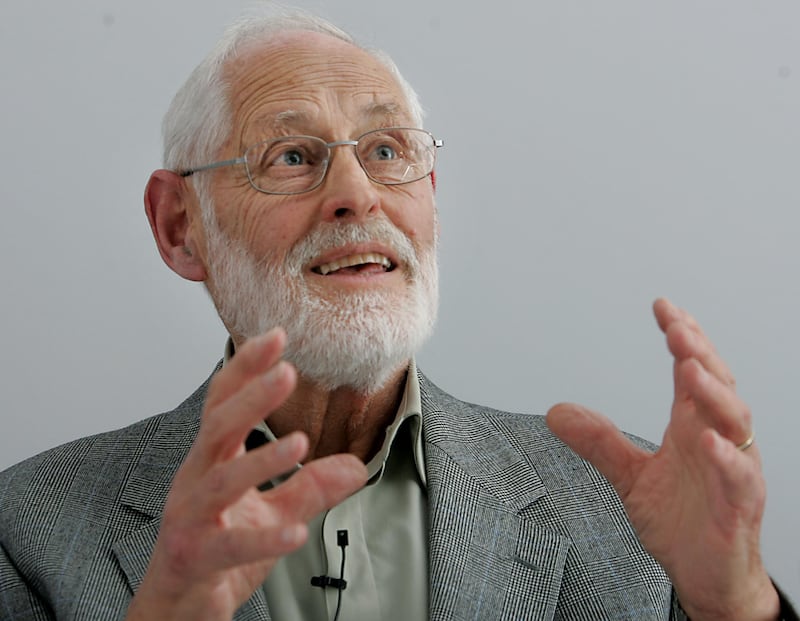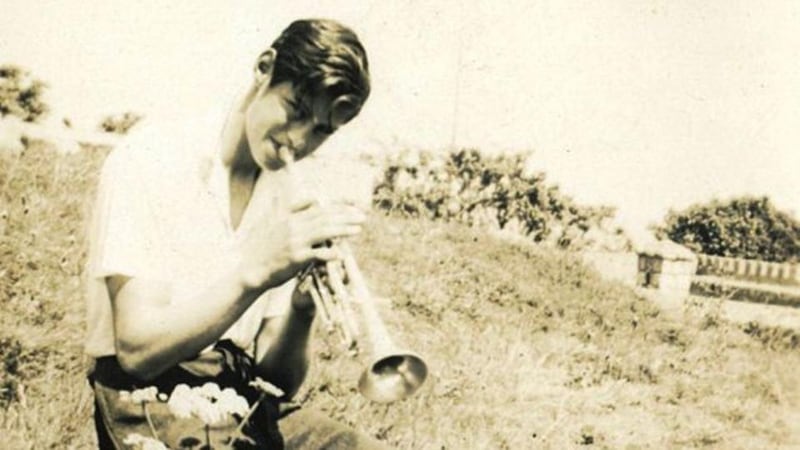In June 1966, the chairman of what was then called the Dublin Health Authority, Joseph Connolly, ceremonially toppled one of the big grey stones that made up the high, forbidding walls around the city’s main mental hospital, St Brendan’s at Grangegorman. This public ritual of tearing down the walls was staged by the city’s chief psychiatrist, Ivor Browne, who died on Wednesday at the age of 94.
Browne has rightly been called ground-breaking but it might be more accurate to call him wall-toppling. Arguably no other individual did so much to remove the physical and imaginative barriers that separated people with mental illnesses from the rest of Irish society. If, today, it is normal for Irish people to talk openly about mental health, Ivor Browne was the one who opened up that space.
Browne was essentially a Freudian who championed the ‘talking cure’. He believed mental illness was rooted in traumatic experience and in toxic familial relationships
In recent decades, Ireland has been coming to terms with the legacy of its extraordinary system of coercive confinement in institutions like industrial schools, Magdalene laundries and mother-and-baby homes. The part of that system that has yet to be reckoned with is the one that unjustifiably locked away many thousands of people in mental hospitals. Ireland in the 1950s and early 1960s had the highest rate of incarceration of its people in mental hospitals in the world – higher even than in Stalin’s Soviet Union.
[ Groundbreaking Irish psychiatrist Ivor Browne dies aged 94Opens in new window ]
These vast, grim prison-like institutions loomed over many Irish towns. Grangegorman alone had 1,628 inmates. Conditions were often dreadful and treatment often minimal. When Browne became Dublin’s chief psychiatrist, psychiatry itself was in a woeful state. A report co-authored by Browne and Dermot Walshe in 1965 found that more than a third of posts in mental health services were vacant and that there were, on average, just two psychiatrists per mental hospital, or one per 454 inpatients. This was a decrepit service for discarded people.

Browne wanted to dismantle this whole system. He announced that “we no longer need the mental hospital as we know it”. While he always recognised that some people would need long-term residential care, he argued that “Hospital facilities and the hospital beds should now be considered part of the community they serve.”
Browne’s personality enhanced his presence. On the one hand, his enormous height and striking looks gave him a natural air of authority. On the other, he retained an almost preternatural serenity, underpinned by his long interest in Indian spiritual practices of yoga and meditation, and radiated a kind of astute compassion in which necessary professional detachment was always combined with genuine sympathy.
In his own practice, Browne was essentially a Freudian who championed the “talking cure”. He believed that mental illness was rooted in traumatic experience and in toxic familial relationships. He was therefore sceptical of what he regarded as the overuse of drug treatments and electroconvulsive therapy – views that set him at odds with many of his colleagues.
He was open to unorthodox explorations, announcing in a lecture in 1970 that he had taken LSD as an experiment (he found it frightening and extremely unpleasant) and later using ketamine in highly controlled conditions with some of his patients.
[ How Medical Council decided to admonish Ivor BrowneOpens in new window ]
He retained a holistic view of the human mind, heavily influenced by his passion for music (he played jazz and then Irish traditional music) and for the arts. Many artists in turn benefited from his support and wisdom. The great playwright Tom Murphy was one of those who spoke in public about the importance of Browne as both a therapist and a friend.
But he was just as important for patients – especially women – who were silenced and marginalised. Lynn Madden, who gave evidence in court against her murderous former pimp, John Cullen, and wrote a book about her experiences, credited Browne “who helped me grow towards freedom”.
Browne wanted to dismantle this whole system. He announced that ‘we no longer need the mental hospital as we know it’
It was in therapy with him that she was able to trace her traumatic life back to sexual abuse from her own father at the age of four. “It was in discovering my own buried history that I was able to look towards a different future.” That was what Browne was always trying to do for his patients.
Another of those patients was Phyllis Hamilton, who had children with the celebrity Catholic priest Fr Michael Cleary. In 1995, after Cleary’s death, Browne was concerned about the serious harm that was being done to Hamilton and her son, Ross, by public denials of this relationship and accusations that she was a liar and a blackmailer. At Hamilton’s request, Browne went on RTÉ radio to say that Cleary had always been open with him about what was, in effect, a common law marriage.

For this, Browne was attacked by the Catholic hierarchy and, absurdly, sanctioned by the Medical Council, even though it accepted that he had acted in the best interests of his patient.
He was unapologetic and undaunted. He was confident that he had been right to protect the life and wellbeing of a living patient over the reputation of a dead man and a powerful institution.
[ Ivor Browne: ‘When you give as much love as you can, you get it back 100-fold’Opens in new window ]
The reason so many thousands of people trusted Ivor Browne with their darkest secrets was that they knew implicitly that he would always make that choice. They were right about that – he never wavered in his commitment to the people he served or in his opposition to the systems and cultures that had harmed them. That made him one of Ireland’s great liberators.












